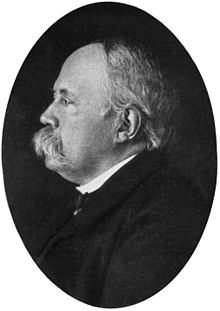Friedrich Goltz

Friedrich Leopold Goltz (14 August 1834 – 5 May 1902) was a German
physiologist and nephew of the writer Bogumil Goltz
.
Biography
Born in
University of Halle, followed by a professorship at the University of Straßburg (from 1872).[1] He is known for his experiments in neurophysiology, and is credited as being the first scientist to perform a hemispherectomy
on a dog.
In 1870 he introduced the "hydrostatic concept" involving the
equilibrioception. Goltz proposed that the canals dealt mainly with the equilibrium of the head, and that the movements of the body were regulated by the more or less conscious awareness an individual has of the position of his head in space.[2]
Goltz held a unitary view of brain function, which he demonstrated in
neurologist David Ferrier held the belief of localization of cerebral functions, which he demonstrated at the same conference. Ferrier presented macaque monkeys with particular paralysis following specific surgeries of the motor cortex
. Ferrier's demonstration of localized functionality impressed the medical community, and was seen as a major impetus in the development of neurological surgery.
He died in Straßburg (Strasbourg).
Published works
He published several articles on the function of the heart and on the venous tone in Pathological Anatomy as well as in Pflügers Archiv of Physiology.[1] Among his principal writings are the following:
- Beiträge zur Lehre von den Funktionen des Nervensystems des Frosches, Berlin: August Hirschwald, 1869 - Contributions to knowledge on functions of the nervous system in frogs.
- Über die Verrichtungen des Grosshirns. Gesammelte Abhandlungen, Bonn 1881 - On actions of the cerebrum.
- Wider die Humanaster. Rechtfertigung eines Vivisektors. Strasbourg, 1883 - Justification for vivisection.[1]
References
- ^ a b c Virtual Laboratory of the Max Planck Institute for the History of Science. (biography)
- ^ [1] Text-book of physiology By Edward Albert Sharpey-Schäfer
External links
- (in German) Biography
- [2] Archived 2011-07-25 at the Wayback Machine Goltz-Ferrier Debates on Cerebral Localization
